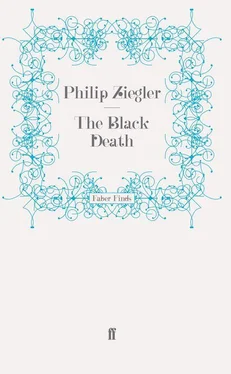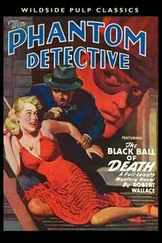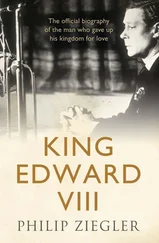Razi, Poos and Goldberg are demographers as well as social historians. And the two specialisms are combined again in the work of John Hatcher and Barbara Harvey. John Hatcher’s survey of Plague, Population and the English Economy 1348–1530 (London, 1977) has been reprinted many times. He subsequently moved to an earlier period, but has since returned to the later Middle Ages with two important papers on ‘Mortality in the fifteenth century: some new evidence’, Economic History Review, 39 (1986), pp. 19–38, and ‘England in the aftermath of the Black Death’, Past & Present , 144 (1994), pp. 3–35. Hatcher’s research on the obituary lists of Christ Church (Canterbury) was what gave him the ‘new evidence’ for that article in 1986. And the heavy mortalities and characteristically short life-spans of Canterbury’s post-plague monks have been found to be matched exactly in the Westminster Abbey data, discussed by Barbara Harvey in her Ford Lectures of 1989, and published in Living and Dying in England 1100 – 1540. The monastic experience (Oxford, 1993).
Philip Ziegler ends his book with three wide-ranging chapters on the effects of the pestilence in the longer term, with particular reference to English instituions and the economy. But as everybody writing on the Black Death has found, disentangling its consequences from those of other contemporary factors has not been easy. Was it plague, episcopal benefactions, or new chantry-related employment opportunities, for example, which brought increasing numbers of students to Oxford and Cambridge in the Late Middle Ages, as William J. Courtenay noted in The effect of the Black Death on English higher education’, Speculum, 55 (1980), pp. 696–714? What part did plague or fear of Purgatory play in the Corpus Christi gilds described by Miri Rubin in ’Corpus Christi fraternities and late-medieval piety’, Studies in Church History, 23 (1986), pp. 97–109, and again in her Corpus Christi. The Eucharist in late medieval culture (Cambridge, 1991)? Was the horror of an unsecured death more responsible than plague itself for the developments in art discussed by Joseph Polzer, ‘Aspects of the fourteenth-century iconography of death and the plague’, in The Black Death, Ed. D. Williman (Binghamton, 1982), pp. 107–30, by John B. Friedman, ‘“He hath a thousand slayn this pestilence”: the iconography of the plague in the Late Middle Ages’, in Social Unrest in the Late Middle Ages, ed. Francis X. Newman (Binghamton, 1986), pp. 75–112, by Louise Marshall, ‘Manipulating the sacred: image and plague in Renaissance Italy’, Renaissance Quarterly, 47 (1994), pp. 485–532, by Phillip Lindley in ‘The Black Death and English Art’ in The Black Death in England, eds. Mark Ormrod and Phillip Lindley (Stamford, 1996), and by myself in Chapter 9 (‘Architecture and the Arts’) of King Death (London, 1906)?
On mortality art and its associated rituals, Paul Binski’s Medieval Death (London, 1996) is especially useful But there is much relevant material also in Kathleen Cohen’s Metamorphosis of a death symbol The transi tomb in the Late Middle Ages and the Renassance (Berkeley, 1973), Philippa Tristram’s Figures of Life and Death in Medieval English Literature (London, 1976), R. C. Finucane’s ‘Sacred corpse, profane carrion: social ideals and death rituals in the later Middle Ages’, in Mirrors of Mortality. Studies in the social history of death, ed. Joachim Whaley (London, 1981). J. M. Maddison’s ‘Master masons of the diocese of Lichfield: a study in 14th-century architecture at the time of the Black Death’, Transactions of the Lancashire and Cheshire Antiquarian Society, 85 (1988), pp. 107–72, Pamela King’s ‘The cadaver tomb in England: novel manifestations of an old idea’, Church Monuments, 5 (1990), pp. 26–38, Howard Colvin’s Architecture and the After-Life (New Haven and London, 1991), Nigel Llewellyn’s The Art of Death. Visual culture in the English death ritual c. 1500 – c. 1800 (London, 1991), Malcolm Norris’s ‘Later medieval monumental brasses: an urban funerary industry and its representation of death’, in Death in Towns, ed. Steven Bassett (Leicester, 1992), pp. 184–209 and 248–51, Richard Marks’s Stained Glass in England during the Middle Ages (London, 1993), Ann Eljenholm Nichols’s Seeable Signs. The iconography of the Seven Sacraments (Woodbridge, 1994), and Christopher Daniell’s Death and Burial in Medieval England 1066 – 1550 (London, 1997).
One of the more popular subjects in post-plague literature and the arts was the Dance of Death which, in reminding its viewers of Death’s equalizing sweep, always carried with it at least an element of social protest. And, in the longue durée, it was probably in the encouragement of new aspirations in the deprived and disadvantaged that the Black Death’s legacy was most enduring. On those aspirations and their outcome, see the collected papers in Social Unrest in the Late Middle Ages, ed. Francis X. Newman (Binghamton, 1986). Christopher Dyer summarizes the main arguments in ‘The English medieval village community and its decline’, Journal of British Studies, 33 (1994), pp. 407–29, and S. H. Rigby recently gave them a new sociologial twist in his English Society in the Late Middle Ages. Class, status and gender (London, 1995), while protest is again the main concern of E. B. Fryde in Peasants and Landlords in Later Medieval England c. 1380 – c. 1525 (Stroud, 1996), a development on his chapter on ‘Peasant rebellion and peasant discontents’ in The Agrarian History of England and Wales. Volume III 1348 – 1500, ed. Edward Miller (Cambridge, 1991), pp. 744–819. For valuable contributions on different aspects of the Great Revolt, see The English Rising of 1381, eds. R. H. Hilton and T. H. Aston (Cambridge, 1984), which follows Rodney Hilton’s Class Conflict and the Crisis of Feudalism: essays in medieval social history (London, 1985), and his earlier monographs on Bond men made free. Medieval peasant movements and the English Rising of 1381 (London, 1973) and The English Peasantry in the Later Middle Ages (Oxford, 1975). Steven Justice’s Writings and Rebellion. England in 1381 (Berkeley, 1994) investigates the literature, while R. B. Dobson’s The Peasants’ Revolt of 1381 (London, 1983) publishes a useful selection of the relevant documents in translation. Mavis Mate has studied the circumstances of later rural discontent in ‘The economic and social roots of medieval popular rebellion: Sussex in 1450–1451’, Economic History Review, 45 (1992), pp. 661–76. And Isobel Harvey’s Jack Cade’s Rebellion of 1450 (Oxford, 1991) is the first full-length modern study of that middle-class revolt, led by the comfortably-off farmers of mid-Kent.
By that time, it was less social protest that roused the men of Kent than the mid-century recession, largely the result of bullion shortages, which John Hatcher discusses in his ‘The great slump of the mid-fifteenth century’, in Progress and Problems in Medieval England, eds. R. H. Britnell and J. Hatcher (Cambridge, 1996), pp. 237–72. And the Black Death was no longer the first thing on their minds. Yet plague, for another two centuries, remained endemic in the West, its still mysterious departure in the early 1700s exercising A. B. Appleby in ‘The disappearance of plague: a continuing puzzle’, Economic History Review, 33 (1980), pp. 161–73, and au Paul Slack in ‘The disappearance of plague: an alternative view’, ibid., 34 (1981), pp. 469–76, where Appleby favours the biological explanation and Slack the medical response. The argument continues in The Decline of Mortality in Europe, eds. R. Schofield, D. Reher and A. Bideau (Oxford, 1991); and plague, one might assume, is now contained. But as Montaigne once wrote: ‘The world runs all on wheels. All things therein move without intermission… Constancy itself is nothing but a languishing and wavering dance.’ ( Essays, 3:2) And with bubonic plague reported in Southern India just a few years ago, we may not have heard the last of it yet.
Читать дальше












